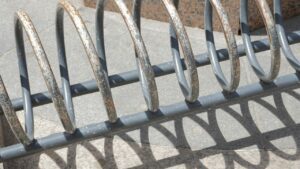Post-Minimalism takes the stark simplicity of Minimalism and infuses it with a dose of personal expression and complexity.
It’s an art movement that emerged in the late 1960s, offering a more relaxed and individualistic approach to the rigid forms of its predecessor.
We’ll jump into the nuances of Post-Minimalism, exploring how artists broke the mold to create works that are both minimal and expressive.
Stay with us as we unravel the layers of this intriguing artistic evolution.
Origins Of Minimalism
In the late 1950s, a burgeoning art movement began to strip down art to its essential forms and concepts.
This new style, known as Minimalism, emerged primarily in New York, becoming a defining trend of the 1960s.
Artists like Frank Stella and Donald Judd steered away from expressive art, focusing instead on the materiality and form of the work.
At the core of Minimalism lay a radical idea – that art could be made from simple, geometric shapes without any referential content that might evoke emotion or metaphor.
The aim was to create works that stood alone, free of illusion or the artist’s hand, and open to the viewer’s interpretation.
- Emphasis on anonymity of design,
- Use of industrial materials and processes,
- Reduction to basic geometric forms.
As we explore the characteristics of the movement, it’s essential to recognize the influence it had on various forms of creative expression.
In filmmaking, for example, these minimalist principles have shaped the way directors approach visual storytelling, character development, and narrative structure.
Films like 2001: A Space Odyssey and Playtime embody minimalist aesthetics through their use of space, symmetrical compositions, and restrained acting performances.
The intersection between Minimalist sculptural practices and the film industry was also evident in production design.
This was where the stark, clean lines of Minimalism infiltrated the visual language of movie sets, giving rise to a particular style that valued simplicity and the careful consideration of space.
As the 1960s progressed, the minimalist style encountered both advocates and critics.
The simplicity and impersonality of the work were often points of contention, leading some artists to seek new ways to infuse their work with personal expression while maintaining a minimalist ethos.
This exploration would soon pave the way for the emergence of Post-Minimalism, a style that retained minimalism’s simplicity but rebelled against its constraints.
Characteristics Of Minimalism
Minimalism in art is characterized by its simplicity and purity of form.
We recognize minimalist works by their emphasis on:
- Repetition of simple geometric shapes,
- Monochromatic color palettes – Lack of surface decoration,
- Use of industrial materials,
- Subtraction of non-essential forms,
- Precision in fabrication.
This movement’s aesthetic favors functionality and restricts the use of complex compositions, narratives, and emotional content.
The stark presentation is aimed at drawing viewers’ attention to the material and the form alone.
Artworks like Donald Judd’s Untitled series and Robert Morris’s felt pieces exemplify Minimalism’s core qualities.
These works are about the space they inhabit, the viewer’s movement around them, and the contemplation they invoke rather than any external symbolism or storytelling.
When Minimalism transitioned into the film industry, it influenced the cinematography and production design choices.
Films such as 2001: A Space Odyssey stand testament to minimalistic design – with clean lines, expansive monochromatic spaces, and meticulous symmetry.
This reductionist approach in films often helps in creating a distinct atmospheric tension or highlighting the characters’ internal experiences.
In our work as filmmakers, we appreciate how the minimalist approach can enhance storytelling by stripping a scene to its bare essentials.
This not only focuses the audience’s attention on the narrative but also leaves room for individual interpretation.
The subtle relationship between sound and silence, light and shadow, speaks volumes without saturating the visual field.
By paring down to the essence of an image, minimalism in filmmaking challenges us to find depth in simplicity and conveys a powerful visual message with fewer elements.
It’s not about the absence of content but about the precision of its presentation and the impact that restraint can have on the viewer.
Emergence Of Post-minimalism
Post-Minimalism surfaced in the late 1960s and early 1970s as artists began to question and evolve beyond the strict boundaries set by Minimalism.
This artistic wave was a diverse response that sought to infuse Minimalism with personal expressiveness and complexity.
While Minimalism focused on industrial materials and impersonal methods, Post-Minimalism embraced organic forms and textures, allowing artists to inject their work with greater subjectivity.
The movement emerged primarily in the United States, with artists pushing the envelope of what minimalist art could convey.
Figures like Eva Hesse and Bruce Nauman became noteworthy for their unconventional approaches.
Hesse’s Repetition Nineteen III, with its soft, latex forms, contrasted sharply with the hard edges found in earlier minimalist works.
Nauman’s exploration of body and performance art through works like Walking in an Exaggerated Manner Around the Perimeter of a Square questioned the static nature of minimalist sculptures, introducing dynamic human elements.
Key Characteristics of Post-Minimalist Art:
- Integration of organic materials and forms,
- Emphasis on process and the artist’s hand in the work,
- Aesthetic that encourages sensory and experiential encounter.
Post-Minimalism also marked a departure from the gallery-centric view – pieces often required specific environmental contexts for full effect.
This expanded the scope of art’s interaction with audiences, blending the line between the art object and its surroundings.
So, post-minimalist works are more ephemeral, site-specific, and interactive, presenting challenges for permanent collection and display.
Key Artists Of Post-minimalism
In exploring Post-Minimalism, we can’t overlook the pivotal creators who steered this evolutionary art movement.
Their works broke molds and expanded on minimalist concepts, injecting nuanced complexity and human emotion.
- Eva Hesse is one of the most influential Post-Minimalist artists. Her work Contingent is iconic for its use of unconventional materials like fiberglass and latex. Hesse’s creations are marked by their fragility and often evoke a sense of the personal within the geometric forms.
- Richard Serra, renowned for his monumental steel sculptures, exemplifies the physicality and scale that Post-Minimalism embraces. Serra’s Torqued Ellipses series alters viewers’ perceptions of space and invites them to engage with the sheer weight and presence of his work.
- Bruce Nauman, often blurring the lines between various art forms including sculpture, video, and performance, addresses deep human conditions – a prime example is his corridor installations which force viewers into experiencing psychological states of confinement and awareness.
Other notable artists that should be mentioned within the Post-Minimalist movement –
- Lynda Benglis, with her poured polyurethane pieces, challenged traditional notions of sculpture and painting.
- Barry Le Va’s scattered installations introduced the concept of “distributions” where disorder lies at the heart of his artistic expression.
- Robert Morris’s felt pieces, with their gravity-defined forms, bring a tactile and temporal element to Post-Minimalism, offering a new dimension to minimalistic practices.
Each of these artists contributed uniquely to the Post-Minimalism narrative, many of them still influencing contemporary art today.
Their legacies live on as they continue to inspire filmmakers and other artists to push beyond traditional boundaries and explore storytelling through reduced, yet profound visual language.
Post-minimalist Techniques And Styles
We recognize that Post-Minimalism is not just a continuation of its predecessor, but a complex art movement with its own unique techniques and styles.
The artists involved introduced a diverse range of practices that allowed the concept of Minimalism to evolve.
They employed techniques that added emotional depth and personal expression to their works, which is evident across various mediums.
Embracing Organic Forms
In painting, sculpture, and installation art, Post-Minimalists heavily focused on organic forms that stood in stark contrast to the rigid geometries of early Minimalism.
Materials such as latex, fiberglass, and rope were used in unexpected ways to create dynamic, often site-specific works.
Eva Hesse’s Contingent is a prime example, featuring a series of hanging fiberglass pieces that challenge traditional concepts of form and structure.

Introducing Textural Variations
Texture became a crucial component for Post-Minimalist artists.
They moved beyond the slick, polished surfaces of Minimalist pieces to include rough, tactile, and sometimes ephemeral elements in their art:
- Raw, exposed materials such as lead, felt, and tar created a sensory experience,
- Layers and accumulations of material offered depth and complexity,
- Works like Robert Morris’s Threadwaste series redefined surface with their intricate, textured appearance.
Personal Expressiveness And The Artist’s Hand
We notice that the hand of the artist became distinctly visible in Post-Minimalist works.
Marks of production and the process of creation were intentionally left apparent, bringing a human element that was previously shunned in Minimalism.
Richard Serra’s Torqued Ellipses series embodies this style, showcasing immense steel structures that visibly bear the marks and irregularities of their handling and shaping.
Delving Into Environmental Contexts And Installation Art
Post-Minimalism blurred the lines between artwork, environment, and spectator.
Installations became an avenue for engaging audiences in a more immersive and interactive manner.
Artists like Bruce Nauman with Green Light Corridor shaped the viewer’s experience not only through visual but through physical and spatial encounters, adding a performative element to the artwork itself.
What Is Post Minimalism In Art – Wrap Up
We’ve explored the transformative journey from the stark simplicity of Minimalism to the layered intricacies of Post-Minimalism.
Our jump into this artistic evolution reveals how the latter movement’s organic forms and textural depth have reshaped our understanding of minimal art.
By embracing the artist’s touch and the interplay between environment and artwork Post-Minimalism offers a multisensory experience that invites personal interpretation and engagement.
It’s clear that the legacy of Post-Minimalism continues to influence contemporary art and storytelling challenging us to find beauty and meaning in the spaces between less and more.
Frequently Asked Questions
What Is Minimalism In Art?
Minimalism in art is a movement emphasizing simplicity and purity of form, characterized by geometric shapes, monochromatic colors, industrial materials, lack of decoration, and precision in fabrication.
It focuses on functionality over complexity and emotional content.
How Did Minimalism Influence Filmmaking?
In filmmaking, Minimalism influenced cinematography and production design by simplifying scenes to their most essential elements.
This method helps focus the audience’s attention on the narrative and encourages personal interpretation, challenging filmmakers to convey depth with less.
What Is Post-minimalism?
Post-Minimalism is an artistic movement that evolved from Minimalism in the late 1960s and 1970s, introducing personal expressiveness, complexity, organic forms, and textures.
It represents a departure from the rigidity of Minimalism and involves sensory experiences and environmental context.

Who Were The Key Figures In The Post-minimalist Movement?
Key figures in the Post-Minimalist movement include Eva Hesse, Richard Serra, and Bruce Nauman.
These artists expanded on minimalist concepts by incorporating organic materials, personal expressiveness, and complex forms in their art.
How Does Post-minimalism Differ From Minimalism In Terms Of Technique And Style?
Post-Minimalism differs from Minimalism by incorporating organic forms, textural variations, and visible marks of the artist’s hand.
It also focuses on environmental contexts and immersive installations, creating interactive and experiential works that blur the lines between art, environment, and spectator.


